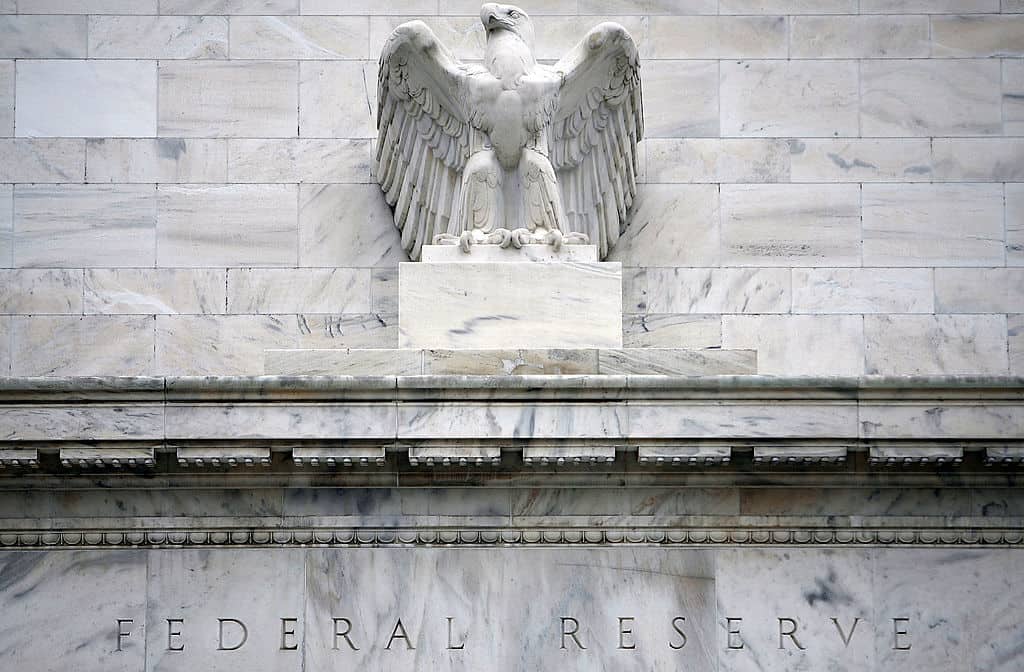The U.S. Federal Reserve on Thursday released a much-anticipated discussion paper that examines the pros and cons of a potential government-backed digital dollar. While the paper does not state whether the Fed will or should launch a digital dollar, experts say it may be the first big step toward that inevitability.
“This paper is an important marker from the issuer of the world’s reserve currency,” said Josh Lipsky, director of the Atlantic Council’s GeoEconomics Center and former senior advisor at the International Monetary Fund, in an email to Forkast. It will be “widely understood, correctly, as the Fed saying they want to play a more active role in international standard setting and they may eventually bring their own model to the table.”
The 40-page paper, “Money and Payments: The U.S. Dollar in the Age of Digital Transformation” includes a call for public comment and descriptions of risks to financial stability as well as personal privacy, which the Fed emphasized that any central bank digital currency (CBDC) should protect. But it also makes a case that despite these risks, there are powerful advantages — such as providing a safe digital payment option for households and businesses as well as faster international money transfers — that Americans could enjoy if they had digital dollars.
“Of course it’s still in question, but more a question of how and when — especially because Congress needs to approve it — and no longer a question of if,” said Ben Emons, a macro strategist at Medley Global Advisors. He added that the positive reactions from lawmakers like the Senate banking committee’s ranking member Pat Toomey also make the likelihood of the digital dollar more certain.
Today’s report is an important step by the Fed in acknowledging the permanence of #crypto and their underlying technologies. I look forward to working with the @federalreserve and my colleagues in Congress to consider the authorization of a properly designed CBDC.
— Senator Pat Toomey (@SenToomey) January 20, 2022
“Today’s report is an important step by the Fed in acknowledging the permanence of #crypto and their underlying technologies,” Toomey wrote on Twitter. “I look forward to working with the @federalreserve and my colleagues in Congress to consider the authorization of a properly designed CBDC.”
The Covid-19 pandemic and the rise of easy-to-use and trusted smartphone-accessed payment systems such as Apple Pay, Google Pay and WeChat Pay are hastening the demise of paper cash, especially in Asia. Since the U.S. dollar is the main intervention currency for banks throughout the world, a digital dollar may set the standard for the future of money and would allow the government to expand its control over monetary policy even as private cryptocurrencies such as Bitcoin are growing in acceptance.
More than 87 countries are now exploring their own state-backed digital currency, compared to 35 in May 2020, according to the Atlantic Council’s CBDC tracker. Nine small central banks, including those of the Bahamas and Nigeria, have launched CBDCs while 14 others, including South Korea, are in the pilot phase and preparing for a potential full launch. Singapore, Malaysia, Australia and South Africa have also been working together cross-border CBDC payment tests.
China’s digital yuan — though it will not be the first fully operational CBDC — is the world’s most-watched due to the size of the country’s economy. Officially called e-CNY, the digital yuan has already been pilot-tested by millions of citizens in billions of transactions. Next month, the People’s Bank of China is expected to use the global stage of the Beijing Winter Olympics to showcase the digital yuan’s usability and technology.
When the digital yuan is officially launched — which is expected to happen sometime this year — it will be the first CBDC from a world superpower.
“In just under two weeks, foreign athletes will be allowed to use the digital yuan in the Olympic Village,” Lipsky said. “At a time when countries around the world are searching for their own CBDC models, China is putting theirs front and center.”
Of the world’s four largest central banks — the Federal Reserve, the European Central Bank, the Bank of England and the Bank of Japan — the U.S. is the most laggard in its CBDC developments, according to the Atlantic Council, which tracks CBDCs around the world.
Concern has been growing that as more countries pursue digital currencies, the U.S. could lose influence, especially its powers of “dollar diplomacy.” But the Fed CBDC paper is now dissipating some of those worries.
“Although the U.S. may be late to the game, do not underestimate how fast its influence can spread around the world thanks to the power of the dollar,” Lipsky said.
Monetary experts are now waiting for the Fed’s next step — which is likely the publication of a white paper on the technical aspects of a hypothetical digital dollar. In collaboration with the Massachusetts Institute of Technology, it is investigating the technology necessary for a digital dollar to provide “speed, security, privacy and resiliency needed to be [digital] money for the world’s largest economy,” the Fed’s Boston branch said, at the launch of that project in August 2020.





